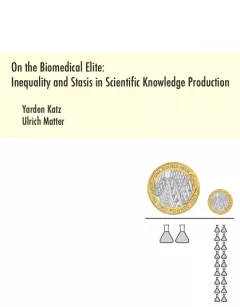
On the Biomedical Elite: Inequality and Stasis in Scientific Knowledge Production
Published
By Yarden Katz and Ulrich Matter
Researchers and research institutes are increasingly being evaluated using metrics (from bibliometrics to patent counts), which are core instruments of a longstanding effort to quantify scientific productivity and worth. In this report, we examine the relationship between commonly used metrics and funding levels for investigators funded by the National Institutes of Health, the largest public funder of biomedical research in the United States, in the years 1985-2015. We find that funding inequality has been rising since 1985, with a small segment of investigators and institutes getting an increasing proportion of funds, and that investigators who start in the top funding ranks tend to stay there (which results in stasis, or lack of mobility). Furthermore, funding levels are a strong quantitative predictor of the interrelated set of metrics frequently used by economists and policy makers to evaluate scientific research. Our results suggest that the widespread system of metrics favors a minority of elite, highly funded researchers and institutes. Current attempts to "optimize'' science are inextricably linked to the concentration of funds in the biomedical research system and are likely to further reduce diversity in the research community.
You might also like
- communityCalling All Technologists
